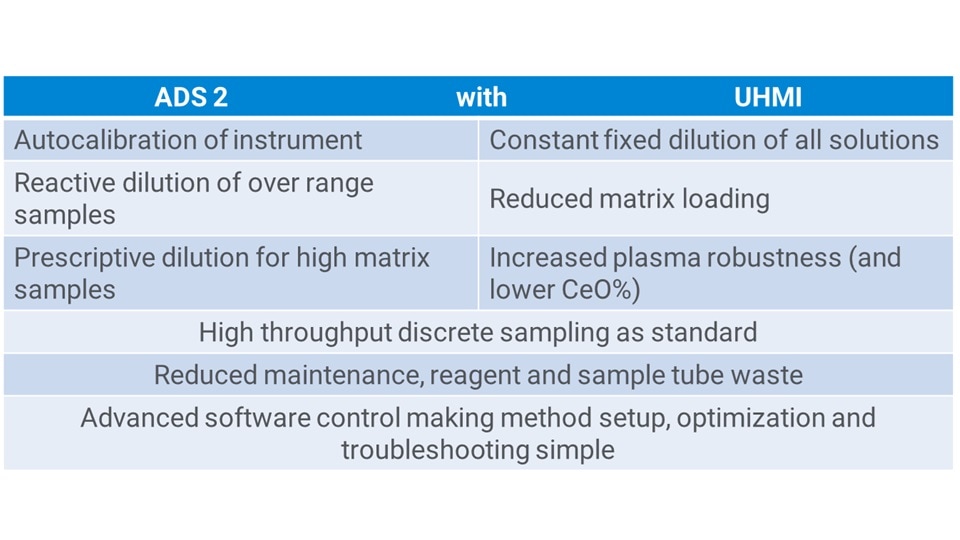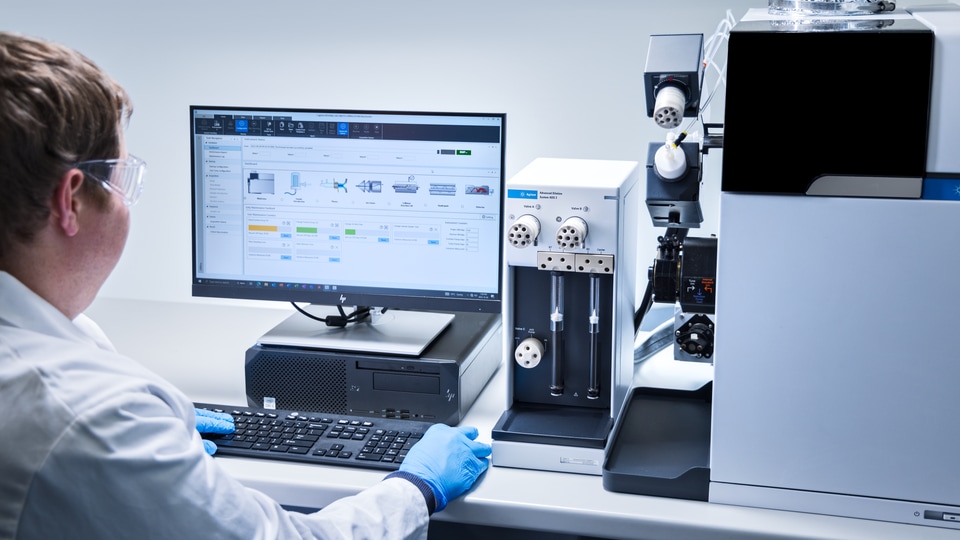Automating routine lab tasks can significantly improve productivity and reduce errors from manual repetitive procedures. One crucial task for obtaining accurate and reliable analytical results is to ensure that calibration standards are prepared correctly.
The ADS 2 autodilutor will create calibration solutions from one or more calibration stock standards, while the new Autocalibration tool in the ICP-MS MassHunter software further reduces problems associated with entering incorrect concentrations via transcription errors. The ADS 2 requires only a very small amount of valuable bench space, you don’t need to reorganize your lab to accommodate it, as shown in Figure 1.
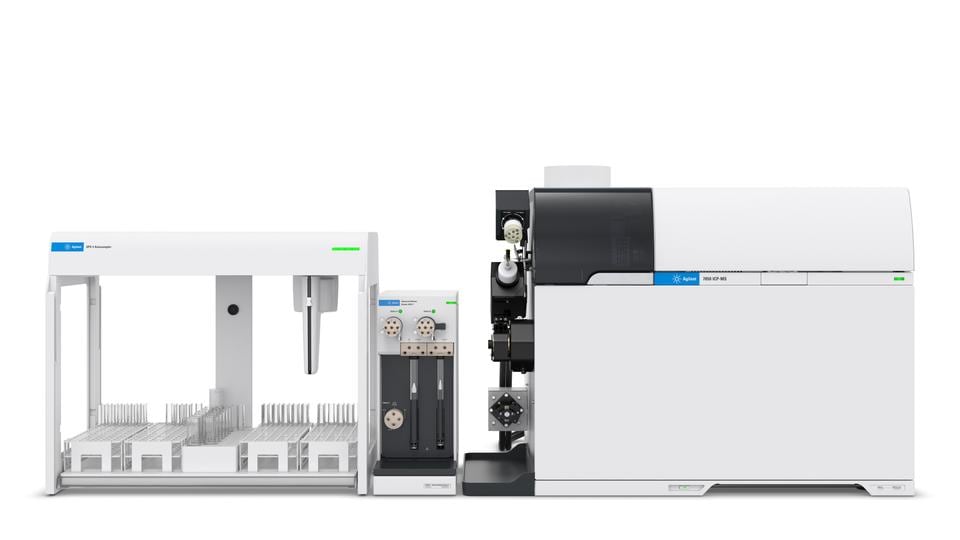
Autocalibration Assistant for quick and easy method setup
The Autocalibration Assistant tool shown in Figure 2 includes a database of common Agilent ICP-MS multi-element stock solutions. Custom standards, whether sub-stocks or completely custom, can be easily added to the database and accessed whenever needed.
Creating a calibration is as easy as selecting the stock or stocks and defining the dilutions that you want ADS 2 to perform.
ICP-MS MassHunter then calculates the calibration levels and pre-fills the sample list.

Prescriptive dilution using ADS 2
Using ADS 2, prescriptive dilution (diluting a sample or batch of samples by a predefined value before measurement) is simple.
The desired dilution factor (2 to 400 times) is entered or imported directly into the ICP-MS MassHunter sample list under the “Autodilution” column.
The prescribed dilution factor can be the same or different for each sample within the batch giving the best available flexibility for the application.
Reactive dilution using ADS 2
Reactive dilution automatically dilutes samples based on certain criteria, such as the measured concentration of the sample exceeding the calibration range.
Reactive dilution actions are defined within the QC control panel of the ICP-MS MassHunter software and are also compatible with the optional Intelligent Sequencing module.
Overrange dilution concentrations can be easily defined as a factor of the highest calibration standard. For example, only dilute the sample if it is 2x higher than the top calibration standard.
Reactive dilutions can also be performed if an internal standard falls outside of the defined QC parameters (e.g. if an unexpectedly high matrix sample causes matrix suppression).
Dilution lists simplify setting up dilutions in ICP-MS MassHunter
A dilution list defines the elements, on a per-sample basis, which will trigger a reactive dilution (Figure 3). The dilution list can work with or independently of the sublist in ICP-MS MassHunter. The sublist allows selected samples to be measured with a separate sub-selection of analytes, potentially reducing analysis time and data reduction by only analyzing elements of interest.
Any element in the dilution list will actively trigger a reactive dilution if it exceeds the QC limits. Any element not in the dilution list will not trigger a dilution even if it exceeds the limits, but will still be measured and reported.
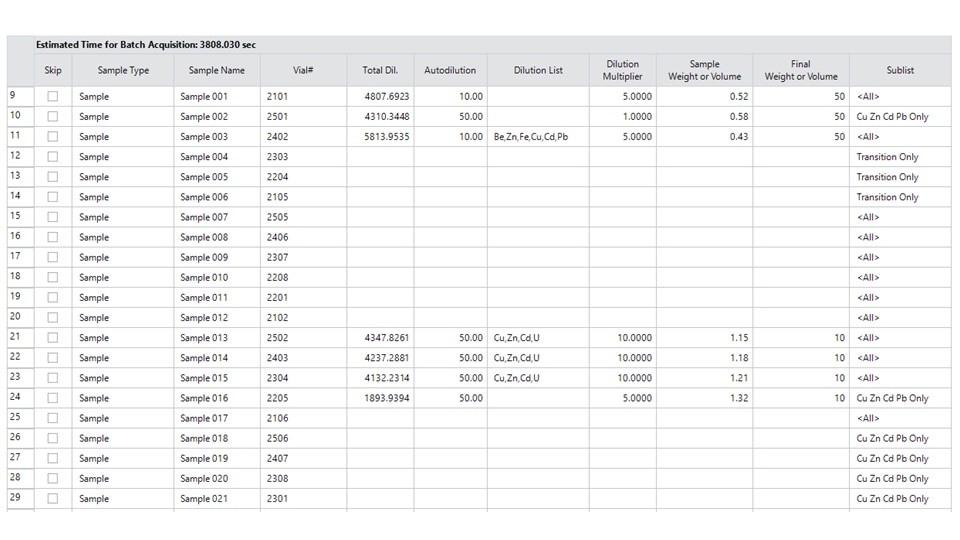
No time penalty for measurements of undiluted samples
When running an undiluted sample, ADS 2 bypasses the dilution loop and directly fills the sample loop of the AVS MS switching valve (previously called the ISIS 3). This means that no extra time is taken to fill a dilution loop with undiluted sample, there is no carrier syringe activation, and no ADS 2 carrier solution is used unnecessarily.
The time savings can be significant, particularly when considering that the average sample batch will run 80 to 90% of the samples undiluted.
ICP-MS MassHunter software contains a suite of tools to help optimize ADS 2
Autodilution and valve injection systems can be difficult to set up, optimize, and troubleshoot. ICP-MS MassHunter features a suite of tools and help modules to simplify the setup and use of the ADS 2.
The ”Conditions Calculator” asks a few basic questions, such as loop size and autosampler probe tubing length, and then automatically sets up all timings for sample uptake.
Advanced rinse options allow the user to select from using the autosampler rinse port only to mixed reagent rinses or even a completely manual selection of rinse options.
The “Timing Monitor” visually confirms all uptake, measurement, and rinse timings, as well as signal stability, giving the operator confidence in their setup (Figure 4).
Finally, an automated system test provides a dilution performance report with a simple pass or fail message.
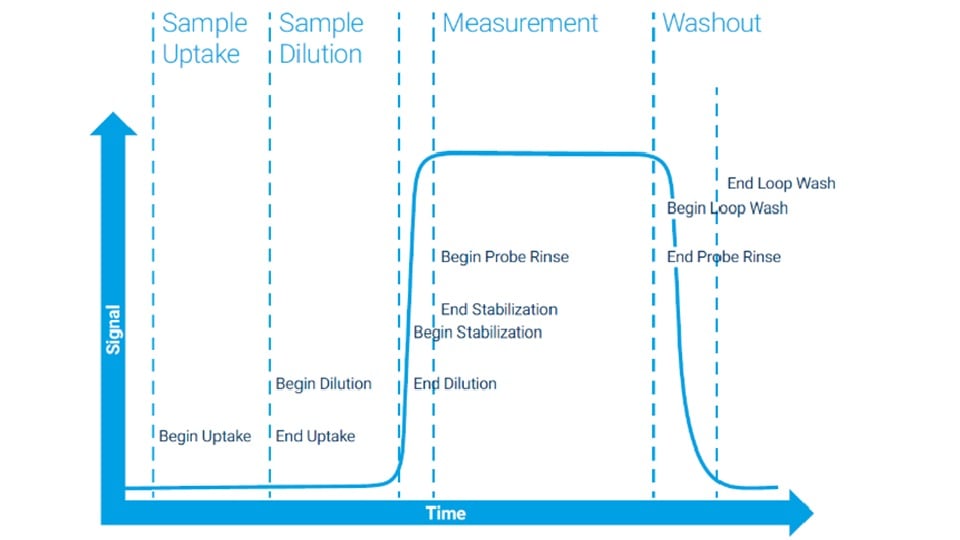
Ultra High Matrix Introduction (UHMI) aerosol dilution
The UHMI system is a dilution option, standard on Agilent ICP-MS, that uses aerosol-phase rather than liquid-phase dilution. It dilutes all solutions, including standards, by a fixed value of up to 100x using clean, dry argon gas. The jet dilution interface in the UHMI efficiently shatters the aerosol stream reducing the amount of dilution gas needed. This means the nebulizer gas flow rate can remain relatively “normal”, which improves sample wash-in and wash-out performance. UHMI is very simple and can be turned on and off on-demand through ICP-MS MassHunter software.

Combine technologies for even greater flexibility
UHMI can operate with or independently of the ADS 2 or AVS MS. For a batch of high matrix samples, all requiring dilution, the UHMI can perform the constant fixed dilution for all samples. Add the ADS 2 for a complete solution to give auto-calibration capability to the ICP-MS as well as perform reactive and, if needed, additional per-sample prescriptive dilutions on demand.
With UHMI performing the fixed dilution, no additional time or diluent is needed as the ADS 2 does not need to waste time and diluent on every sample, this reduces waste and improves sample throughput. ADS 2 then is used for reactive dilutions only when a sample is over range (or the operator defines an additional, prescribed dilution). Table 1 summarizes the features of both ADS 2 and UHMI.
There is no need to choose between the two technologies because they perfectly complement each other.
To see both technologies working together for the analysis of different low and high-matrix samples using a single method1, and high-matrix soil samples2, check out the ADS 2 Journal article or click on the direct application note links in the references below.
